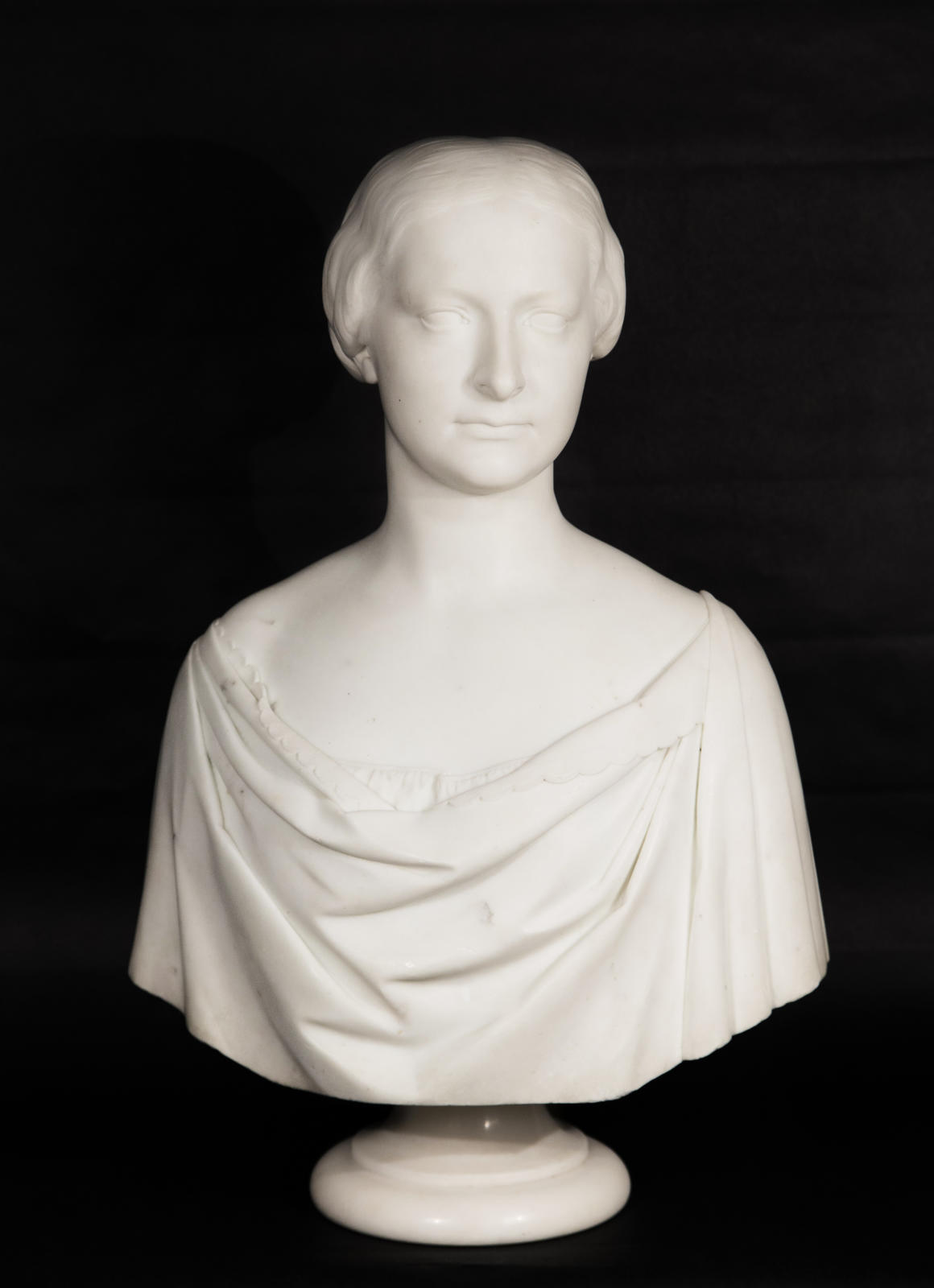artist
Erastus Dow Palmer was born in Pompey, Onondaga County, New York, to a carpenter and his wife. At age 9, he learned the basics of carpentry, and by age 17, he began to pursue his own career as a woodcarver and joiner. In 1846, Palmer was exposed to a delicately carved European cameo, which inspired him to begin practicing cameo carving himself. His first work was a portrait of his second wife, Mary Jane Seaman; a friend of Palmer’s showed the cameo to the lawyer Thomas R. Walker, who praised the work and commissioned Palmer to create one in his likeness. Thus began Palmer’s sculpting career. Upon a trip to New York City in 1846, he began sculpting large-scale works.
In the late 1840s, Palmer’s work began to evidence the influence of neoclassicism, the dominant aesthetic in American and European sculpture in the mid-19th century. He carved in cameo format and in high relief before moving on to working in the round. In 1849, he modeled the first work that would garner him widespread acclaim, a bust of his daughter titled Infant Ceres. Palmer was known to carve his family members and acquaintances in a realistic mode, then later title the sculpture after allegory of myth. His style, derived from the idealization of the Ancient Greeks, was comparable to that of his contemporaries, most notably Hiram Powers.
During the 1850s, when Palmer carved this bust of Ms. Plumb, his Albany studio had become a nexus for artistic activity—almost like a salon. In this decade he submitted works to prestigious public exhibitions, such as those at the National Academy of Design. Though following decades saw the peak of Palmer’s career, the Civil War caused a decline in patronage. In 1873, however, the State of New York commissioned Palmer to create a full-length statue of the statesman Robert R. Livingston in bronze. He traveled extensively to plan for the statue. Upon his return, aged nearly 70 years old, the neoclassical style had gone out of fashion and sculptors had largely abandoned classical marbles for realistic bronzes. He died in Albany and is remembered for an artistic legacy that was simultaneously inspired by Antiquity and yet distinctly American.
provenance
Christie’s NY, March 1990
Private Collection, Newtown, CT







